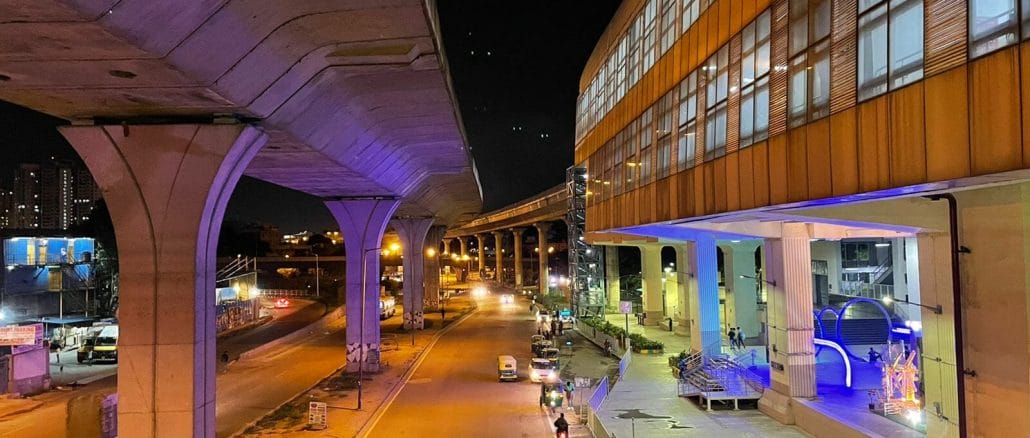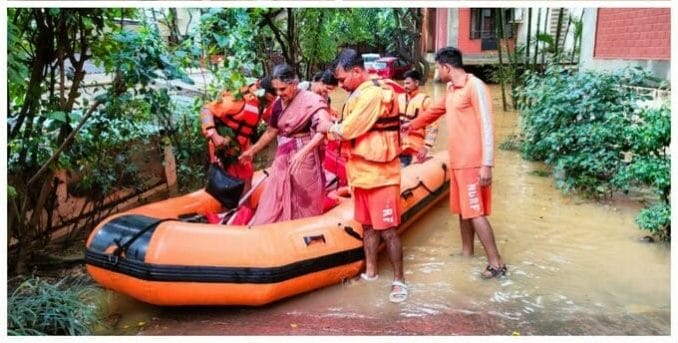[ad_1]

“Currently, district or city-level disaster management departments are predominantly concerned with rescue and recovery, rather than resilience and preparedness, which is what they have to focus on,” says Jaya Dhindaw, Program Director of Integrated Urban Development, Planning and Resilience at World Resources Institute, India.
Masterplans for the city are made for longer spans but cities develop at a much faster pace in comparison to these planning processes, researchers say. “The National Disaster Management Authority (NDMA) does not have the agency to make plans for cities,” says Garima Jain, Gilbert White fellow at the Arizona State University, who works closely with the Indian Institute for Human Settlements. “We need stronger district or local area plans so action at the local level can be taken faster when disaster strikes”.
In an earlier article, we saw what decentralised management of disaster should look like and what it actually looks like with the municipal corporation at the helm of managing rescue and relief operations in the wake of the recent floods in Bengaluru. While the existing systems and processes did not present an optimistic picture. In this article we explore what infrastructure that is designed to mitigate the effects of disasters look like and if disaster management has a place in India’s urban planning mandates.
To fix this gap between planning and disaster management, NDMA needs to have a stronger say in how cities are developed. “Building bye-laws are still limited to a few hazard risks such as earthquakes, but not for others such as cyclones, drought and floods, which in many cities form bulk of the hazard risk,” say researchers.

However, some cities are beginning to incorporate these in their planning or governance mechanisms. Surat, Garima says, has managed to contain its urban development to specific areas and built some sort of flood resilience. “The city came up with committees and saw organs like the water department, waste disposal agencies and private sector come together after the 2006 floods,” she says.
In Kochi, after consecutive floods, state and city agencies were roped in to shift from rescue and recovery to resilience and preparedness, adds Jaya.
Read more: Disaster management in Bengaluru: Temporary fixes touted as solutions as city floods again
Disaster resilient infrastructure
A 2021 report by the National Institute of Disaster Management (NIDM) recognises regional airports as “crucial links for humanitarian operations, providing access to search and rescue teams, medical response teams and relief supplies.” Assessing the vulnerability and hazards posed to airports, Chiranjit Barthakur of Bangalore International Airport Ltd. mentioned how airports have to be seismic resilient and have to be planned to accommodate rainfall scenario for 100 years.
However, disaster resilient infrastructure is something that has been thought of only since 2019. “That was the year when the Smart City assessment came and urban planning that was sensitive and resilient to the changing climate was thought of” says WRI’s Jaya. “This is when cities started drawing up climate action plans”.
After the BBMP committed to the legally binding Paris Agreement in 2021, the then BBMP Commissioner had mentioned that the city will begin drafting and implementing a climate action plan. The plan which aims to reduce greenhouse gases and strategise climate change adaptation, will be ready by the end of this year.
One of the objectives listed in the draft Karnataka action plan for climate change and human health (KSAPCCHH) is for the state to work towards developing district-level climate action plans. This includes a list of long-term (five to 15 years) deliverables of climate-proofing communities and infrastructure.

While the dialogue for fostering climate-sensitive urban planning has kicked off, it is up to the cities to implement it in a time-bound manner. An example of how disaster resilient infrastructure would work during a crisis, as Jaya explains, is having sponge surfaces around the train stations. “During floods in Mumbai, the trains come to a stop. If there were sponge surfaces around train stations where the flood water can percolate, then trains can be accessible even in the case of floods”. Macro-level infrastructure like trains and metros have to be built keeping this in mind.
At the micro-scale
While there are efforts that urban local bodies or planning agencies can take at the city level, individuals can also make micro-level changes to strengthen infrastructural resilience. “One can climate-proof their buildings so they don’t get inundated or suffer due to heat” says Jaya, who believes that this can come from making alterations to the building control regulations at neighbourhood-levels.
To combat heat, not-for-profit Hasiru Dala’s Hasiru Mane aims to provide climate-proofed homes for Bengaluru’s wastepickers. The pilot project constructed 25 houses for residents in informal settlements to enable their adaptation to climate change and focus on thermal comfort.
Citizens owning vacant tracts of land can plant trees to increase porosity so that in the case of floods, there’s place for the water to seep in. “In case there are heat-based disasters, these will also provide adequate shade” says Jaya, adding how nature-based solutions can be leveraged to mitigate disaster risks.
Such solutions, Garima adds, will also bring in local-level commitments about what citizens can do collectively locally and chart out short and long-term visions.
Both researchers emphasised on not dismissing the recent floods as a mere climate calamity, but a result of poor urban planning. “Climate is changing, but climate is not the only culprit here,” says Garima. “The blame rests on poor planning processes that create such hazardous instances.”
Also read:
[ad_2]
Source link








